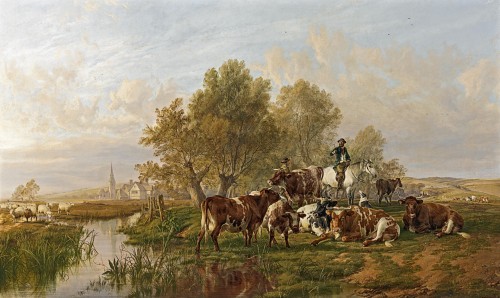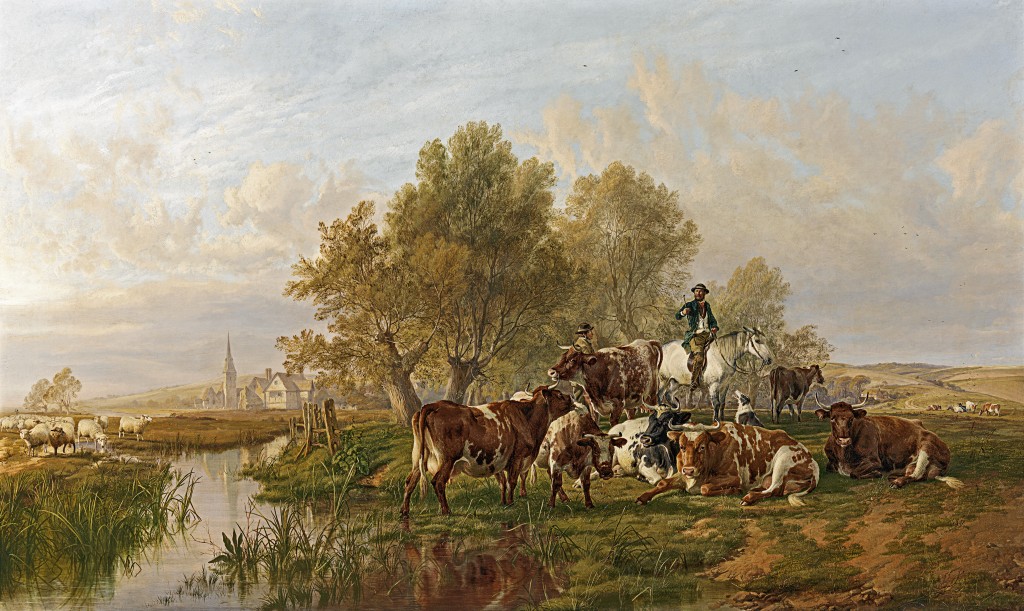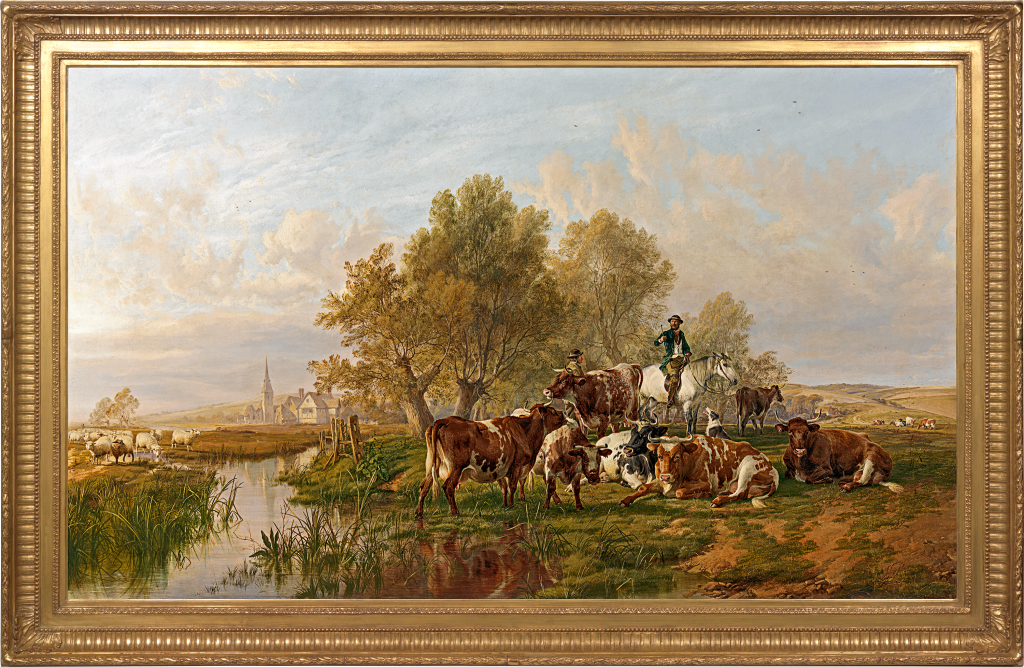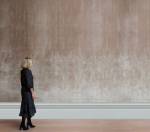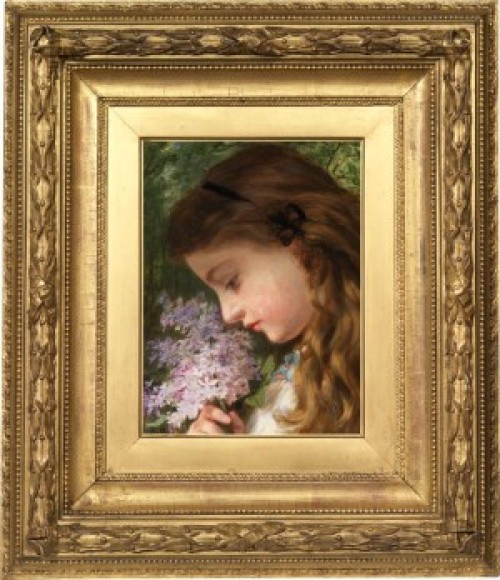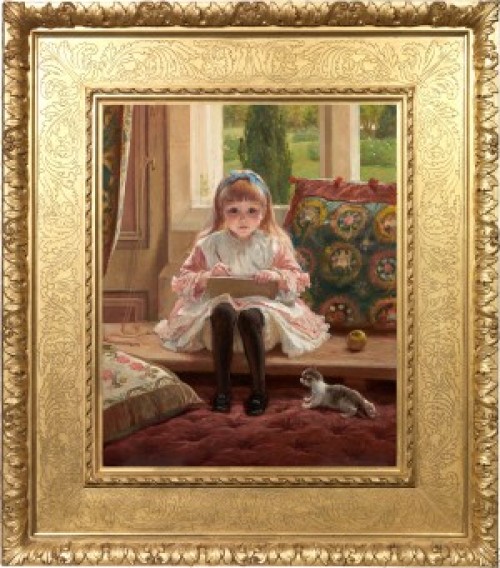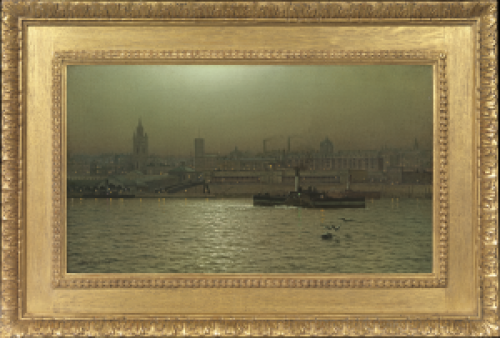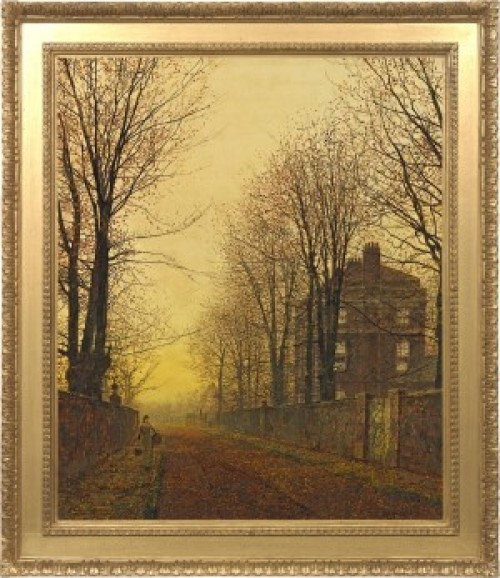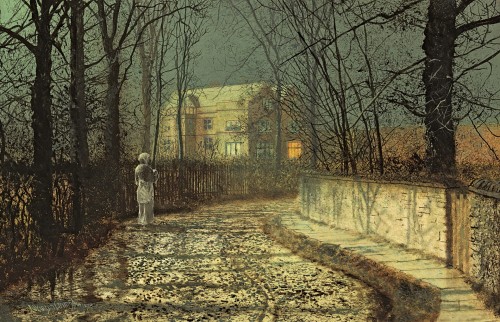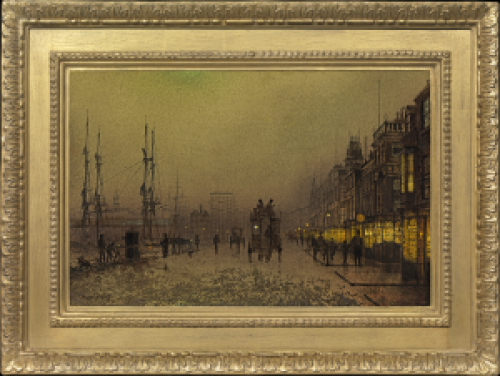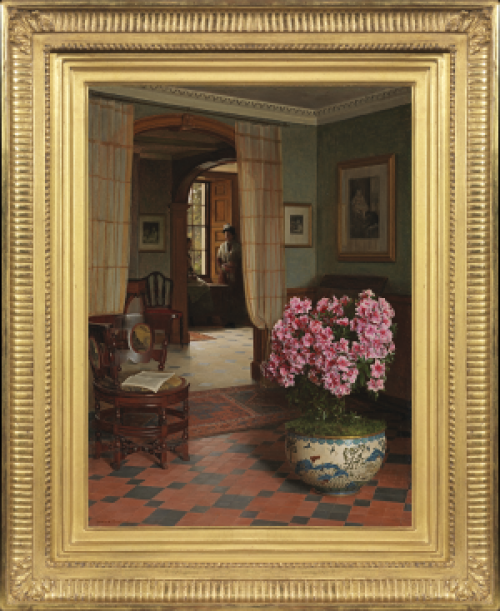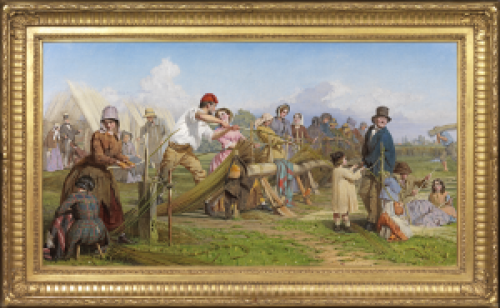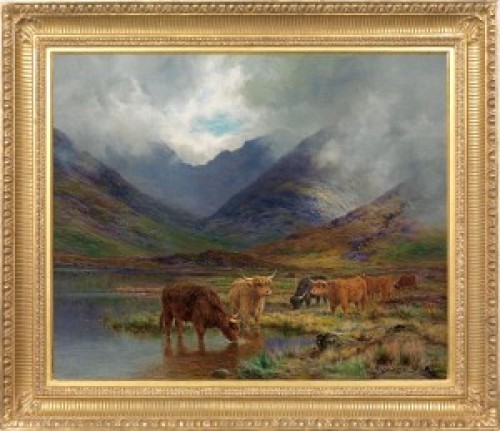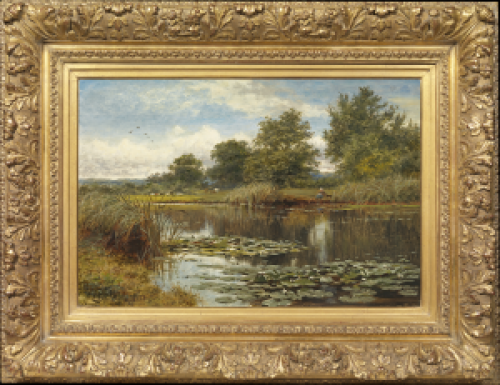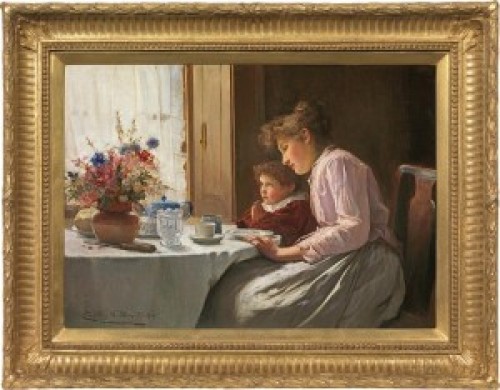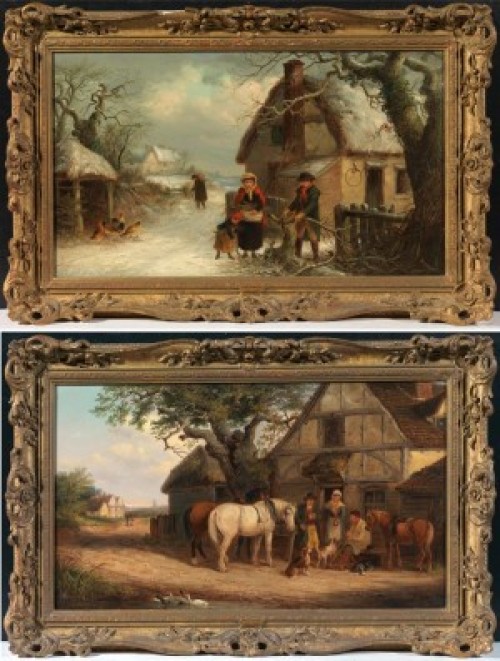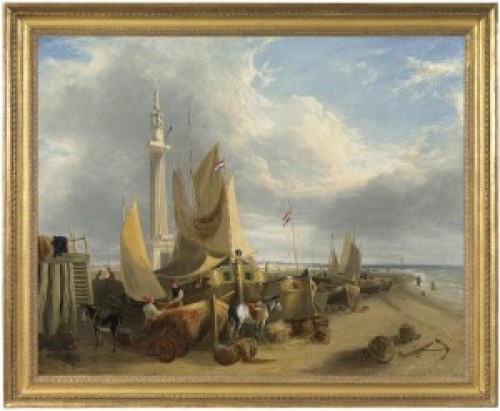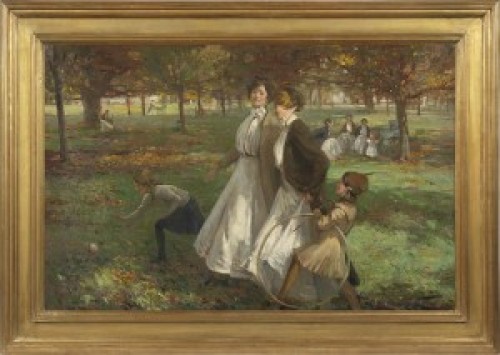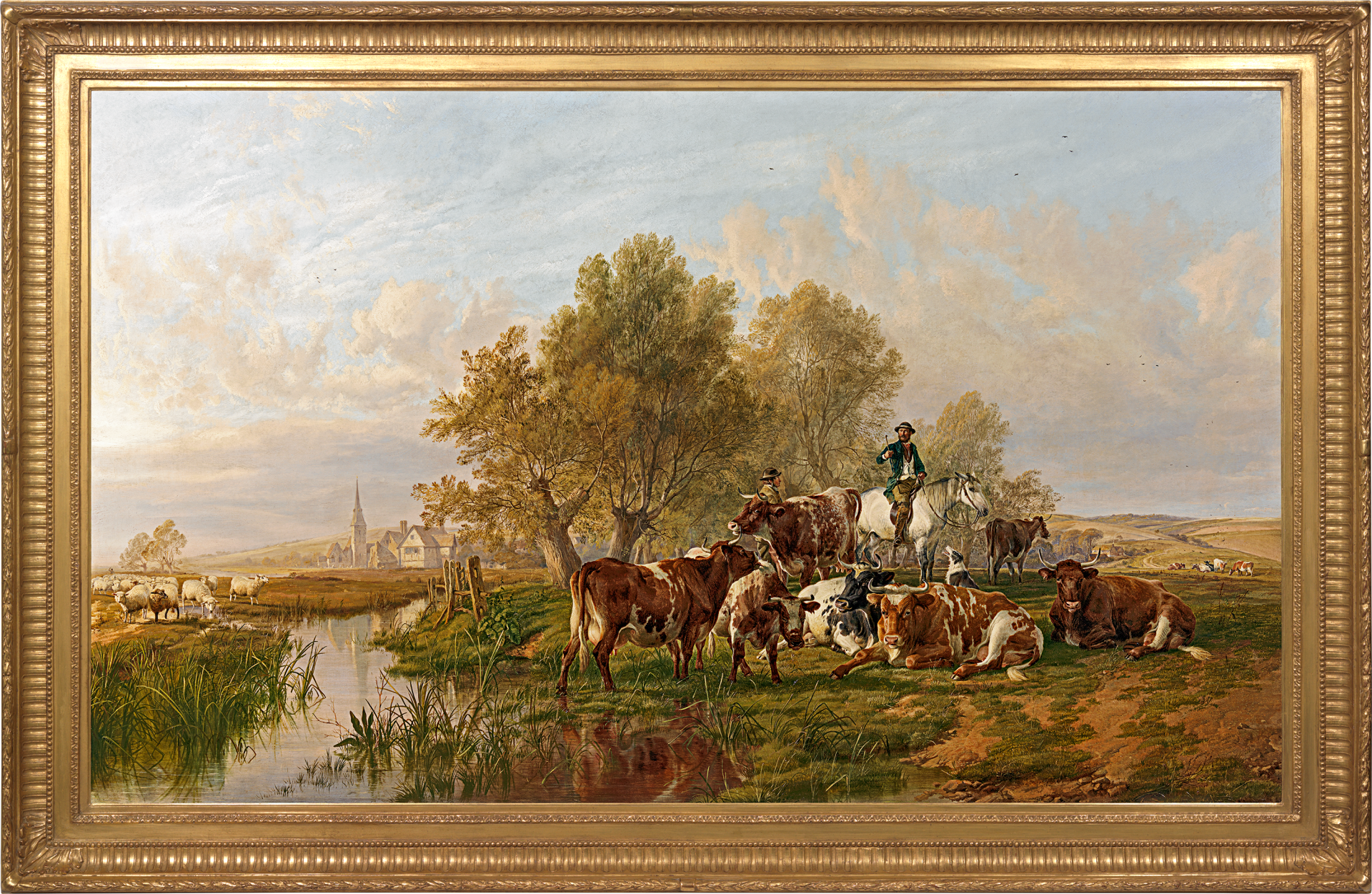THOMAS SIDNEY COOPER CVO RA
1803 - Canterbury - 1902
Ref: CC 203
Canterbury Meadows
Signed and dated lower right: T Sidney Cooper / 1868
Oil on canvas: 36 x 60 in / 91.4 x 152.4 cm
Frame size: 44 x 68 in / 111.8 x 172.7 cm
Provenance:
The Fordham family, Melbourn Bury Manor, Cambridgeshire, listed in their records of 1888, then by descent
Literature:
Stephen Sartin, Thomas Sidney Cooper CVO RA 1803-1902, F Lewis Publishers Ltd, Leigh-on-Sea, 1976, no.185, p.66[1]
Thomas Sidney Cooper, one of the most celebrated British artists of the nineteenth century, was elected a full member of the Royal Academy in 1867, the year before he painted this exceptional work, realising a lifetime’s ambition. Stephen Sartin writes, ‘His reputation was so great that no private collection could be considered complete without having one of his paintings…it is during this period that he received his greatest patronage from both private individuals and dealers.’[2]
Melbourn Bury, south Cambridgeshire, was owned by six generations of the Fordham family up until 2007.[3] The land, which includes the source of the river Mel, a tributary of the Cam, was given to the Monks of Ely in 970 and became one of the most important monastic estates in the area; from the fifteenth century onwards let to tenant farmers. John Fordham, from a prosperous family of squires, bankers and brewers in and around Royston, took on the tenancy in 1830, passing it to his son who acquired the freehold in 1850. Built around a seventeenth century core, the Manor house is now part Regency and part Victorian, added to by successive generations of the Fordham family, including in the twentieth century, Sir Stanley Fordham, ambassador to Cuba and Colombia in the 1950s and 60s.
Born in Canterbury, Thomas Sidney Cooper showed a marked interest in art from his earliest childhood, writing in his autobiography; ‘The earliest recollection that I have is on one Sunday morning, when I was sketching the cathedral’.
At the age of twelve he became assistant to a coach painter, an occupation he combined later with scene painting, whilst devoting his spare time to drawing and painting from nature. He always had great confidence in his artistic ability, stating: ‘I could not be bound as an apprentice for I had a mind above it’. In 1823, he went to London, working briefly at the British Museum and becoming a student at the Royal Academy for a short time in 1824. Pecuniary difficulties forced him to return to Canterbury, where he earned a living giving private art lessons and selling a few of his paintings.
At the age of twenty-four he travelled in Europe, settling in Brussels where he married and stayed for four years. He became acquainted with the seventeenth century Dutch School of Art and the Belgium animal painter, Verboeckhoven, who greatly influenced his style. He later wrote: ‘I was very much impressed by the feeling that this branch of art was not much practised in England’. On his return to London, he soon gained a reputation for his pictures of cattle and sheep, which became extremely popular.
Thomas Sidney Copper was a prolific artist, gaining the record for consecutive exhibiting at the Royal Academy, with 266 paintings shown between the years 1833 and 1902. He also exhibited at the BI, RBA and NWS. He was made an Associate of the Royal Academy in 1845, being made a member twenty-two years later. He became extremely prosperous in his later years, presenting Canterbury with ‘The Sidney Cooper Art Gallery’ which was built on the site of the house in which he was born.
His contemporary popularity is reflected in a critic’s description of him as a painter ‘whose pencil, in its particular department, is unrivalled in the present day, and has scarcely, if ever, been surpassed since ancient times’ (Art Journal, 1849). James Dafforne wrote of one of his works in 1843 - ‘A more delicious example of pure pastoral art was never produced by any painter’.
The works of Thomas Sidney Cooper are represented in museum collections in Birmingham, Blackburn, Cardiff, Glasgow, Leeds, Leicester, Liverpool and the Victoria and Albert Museum, the Wallace Collection and the National Gallery in London.
[1] Sartin lists the painting as part of a private collection, near Royston, Herts. bought from Henry Wallis of 120 Pall Mall in July 1869 for £420 and by descent to the present owner.
[2] Stephen Sartin, Thomas Sidney Cooper CVO RA 1803-1902, op.cit., pp.11, 40.
[3] Country Life, ‘East Anglian estates,’ 29th March 2007.

